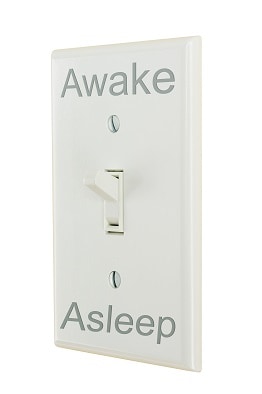NIOSH Training for Nurses on Shift Work and Long Work Hours
Be Aware of the Dangers of Sleepiness and Fatigue
Remember, researchers reported that sleep-deprived participants did not recognize how poorly they were performing. They tended to think they were doing better than they were.31

- Sleep deprivation increases pressure for the brain to fall asleep.
- The transition from wakefulness to sleep is abrupt and rapid and occurs in an on/off-type switch in the brain stem.32 This abrupt transition to sleep can lead to dangerous situations if sleep occurs involuntarily during critical times, such as when you are driving or performing other critical tasks.
- Warning signs that the brain is close to falling asleep include difficulty focusing, frequent blinking, and heavy eyelids; daydreaming or wandering, disconnected thoughts; yawning repeatedly or rubbing eyes; difficulty keeping head up; and feeling restless and irritable.33
- If these symptoms occur, take action quickly to protect yourself and others from the dangers of drowsiness while driving or when performing other critical tasks. You cannot reliably force yourself to stay awake when your brain has high pressure for sleep. If these symptoms occur while driving, stop driving as soon as possible. If someone else is available who is alert, ask that person to drive. Taking a nap, consuming caffeine, or doing both can increase alertness. Because caffeine can take about 30 minutes to get into your bloodstream and cause alertness, you should drink caffeine first, and then nap for 20 minutes. When you arise from the nap, you should feel the alerting benefits from both. However, these are emergency measures; the best defense is getting enough good-quality sleep every day.
Page last reviewed: March 31, 2020
Content source: National Institute for Occupational Safety and Health
